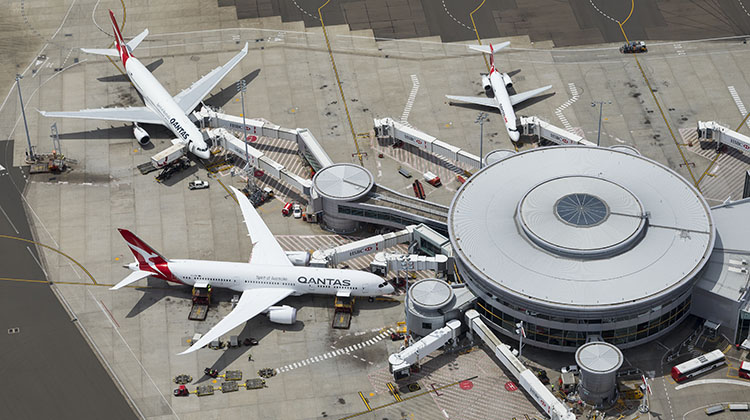
The federal government has accepted the findings of a Productivity Commission inquiry that there is little need for change in the way Australia’s airports are regulated.
Deputy Prime Minister and Minister for Infrastructure, Transport and Regional Development Michael McCormack and Treasurer Josh Frydenberg said in the federal government’s formal response to the Productivity Commission’s report regulatory certainty had provided provided investment certainty that supported airport investment.
“The Australian Government concurs with the PC’s view that the existing airport regulatory framework remains fit for purpose and that there is no current justification for significant change to the current form of ‘light handed’ economic regulation of aeronautical services established under the Airports Act 1996,” the pair said.
The Productivity Commission’s final report, tabled in federal parliament in October, said Australia’s largest airports – Brisbane, Melbourne, Perth and Sydney, which are subject to monitoring by the Australian Competition and Consumer Commission (ACCC) – “have not systematically exercised their market power”.
Further, the final report said the negotiate-arbitrate regime proposed by the airlines would have few benefits and substantial risks. Therefore, it should not be implemented.
“There is no doubt that some commercial negotiations between airports and airlines have been challenging but, on balance, the process and the outcomes reached give little cause for concern,” the Productivity Commission said.
“A negotiate-arbitrate framework would have substantial perverse effects that would harm the efficiency of the sector and negatively affect passengers.
“The benefits would need to be very large for the costs and risks of such a framework to be tolerable. They are not.”

While the Productivity Commission rejected calls to allow airports and airlines that did not reach agreement on a pricing regime during negotiations to have a decision arbitrated on their behalf, its final report did call for the monitoring regime to be strengthened to “enhance transparency over airports’ operations and to more readily detect the exercise of market power”.
The federal government accepted this recommendation and said regulators should receive a broader range of financial information, such as from aeronautical, car parking and landside access and services), and more transparency in airport performance data.
“This will enable a more comprehensive assessment to be undertaken such that government will be in a position to respond more quickly and effectively should any evidence of abuse of market power be identified,” Frydenberg and McCormack said.
“The Australian government welcomes the PC recommendation that airports be more accountable to the community and the travelling public through closer quality of services monitoring.
“Consequently, the Australian government has accepted the PC’s recommendation to ask the Australian Competition and Consumer Commission (ACCC) to undertake a review of quality of service indicators to ensure they have a greater focus on outcomes and more closely reflect the expectations of passengers, airlines and other airport users.”

The debate between airports and airlines since the Productivity Commission launched its inquiry in 2018 has featured particularly strong language on both sides.
While the airlines and their lobby group Airlines for Australia and New Zealand (A4ANZ) sought to cast their campaign for change as one for the benefit of consumers, the Australian Airports Association (AAA) described it as a “disingenuous attempt to increase airline profits at expense of investment”.
AAA chief executive Caroline Wilkie said the government’s response provided certainty for airports at a time where many were undertaking significant investment in their facilities.
“We are pleased to see the government endorse the Commission’s findings, providing regulatory stability to support the $20.6 billion in airport investment that is planned over the next 10 years,” Wilkie said in a statement.
“This will ensure Australia’s airports can continue to build the necessary capacity, new facilities and services to support our economy and give passengers the best possible experience, greater choice and value for money.”
A4ANZ chairman Graeme Samuel said in a statement the federal government’s acceptance that the ACCC needed to undertake further monitoring of the nation’s airports represented an admission that there was a problem.
However, the proposed expanded monitoring was not a solution.
“They have squibbed the chance to actually do something about it for the Australian travelling public,” Samuel said of the federal government.
“Australia’s airlines and airport users face significantly increasing costs that will lead to more disputes like the multi-year court case where Perth Airport is suing Qantas to extract monopoly rent.”
The government’s response can be read in full on department of The Treasury website.















